Serengeti National Park
Welcome to Serengeti National Park, Tanzania’s legendary safari destination and the stage for the world-renowned Great Wildebeest Migration. Explore vast golden plains, witness stunning sunsets, and encounter incredible wildlife at every turn. With Leen Adventures, embark on an unforgettable journey through one of Africa’s most celebrated wildernesses where every game drive reveals a new adventure.
Authentic Serengeti safari
Geographic Size
14,750 km²
Mammal Species
350+
Best Time to Visit
All year round
Yes (since 1981)
Most Famous For
The Great Wildebeest Migration
Habitats of the Serengeti: The Diverse Landscapes That Sustain Its Wildlife
1. Open Grasslands:
These vast golden plains dominate the central Serengeti, providing grazing for wildebeest, zebras, and gazelles. During the migration, predators like lions and cheetahs thrive here, making it one of the best regions for dramatic wildlife encounters and classic safari photography.
2. Riverine Forests:
Lining the Grumeti and Mara Rivers, these lush areas offer shade and water year-round. They attract elephants, hippos, and numerous bird species, creating a tranquil contrast to the open savannah. Leopards often rest in the trees, making riverine forests prime spots for elusive wildlife sightings.
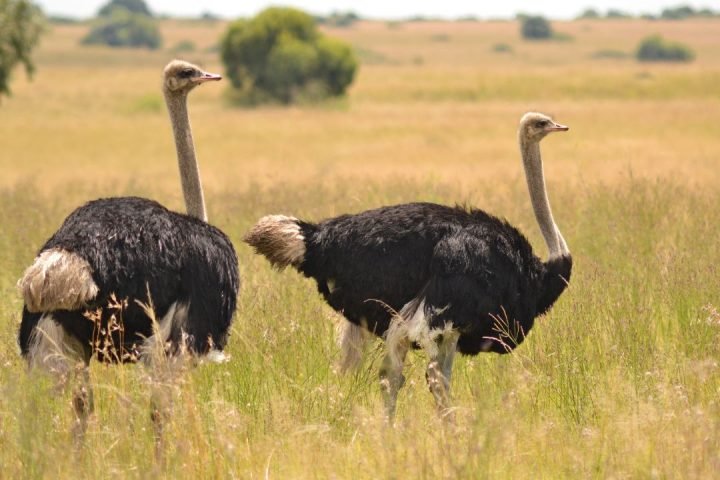
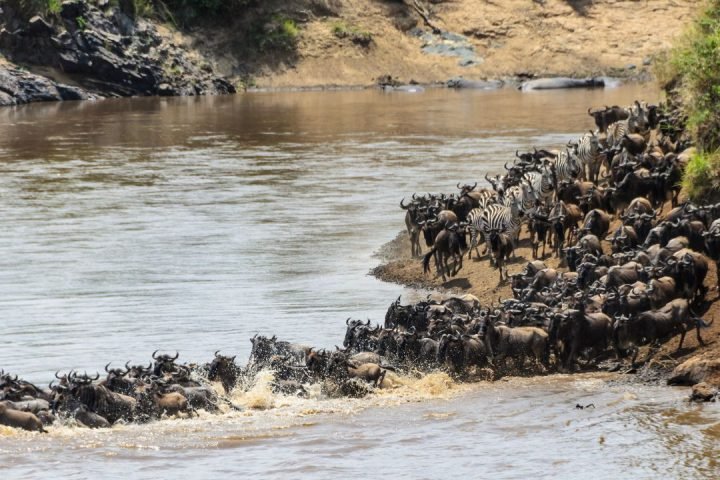
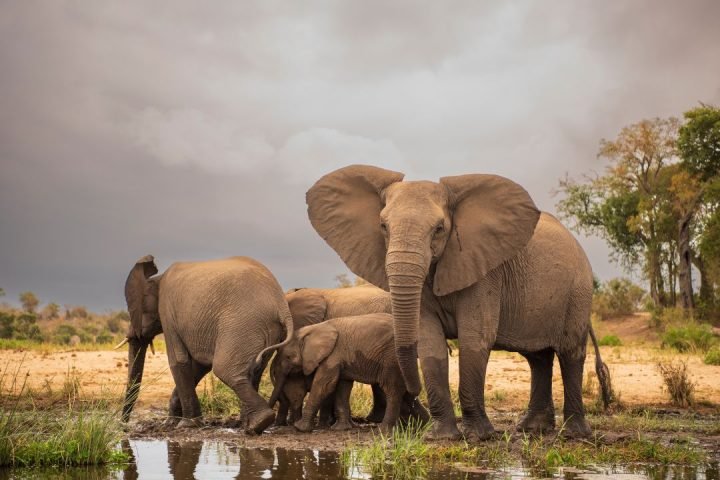
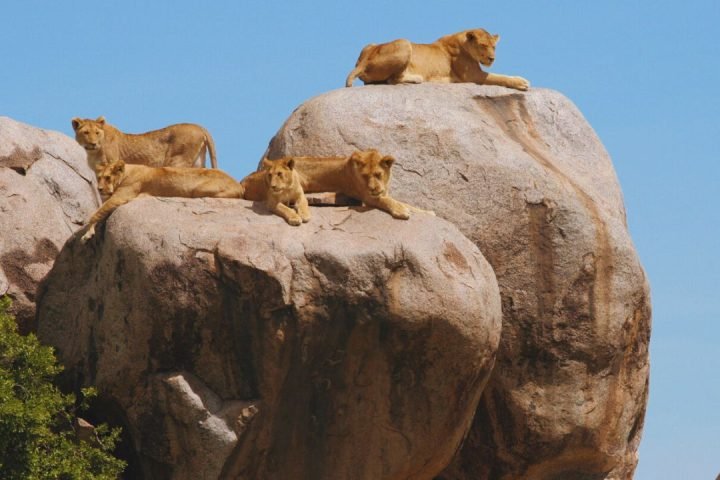
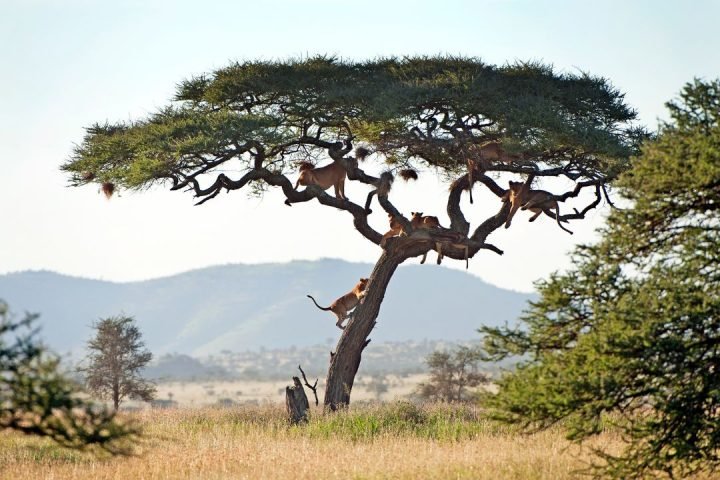
3. Woodland and Acacia Savannah:
Stretching across the western and northern Serengeti, these habitats mix open plains with scattered acacia trees. Giraffes, elephants, and impalas browse the vegetation, while lions and hyenas patrol the shade. This mosaic of grass and woodland supports rich biodiversity and offers scenic diversity for safari travelers.
4. Kopjes (Rocky Outcrops):
These ancient granite formations rise dramatically from the plains, offering shelter and vantage points for many species. Lions frequently rest atop them to survey their territory. Kopjes also host unique flora, reptiles, and small mammals, serving as ecological islands within the Serengeti’s vast expanse.
5. Swamps and Seasonal Rivers:
During the rainy season, low-lying areas fill with water, attracting hippos, crocodiles, and flocks of waterbirds. These wetlands are essential breeding grounds and support a variety of aquatic life. As they dry up, they sustain the ecosystem by providing minerals and moisture to surrounding habitats.
Wildlife and Birds of Serengeti
Wildlife:
The Serengeti National Park hosts one of the richest concentrations of wildlife on the planet. It is home to the legendary Big Five—lion, leopard, elephant, buffalo, and rhino—along with cheetahs, hyenas, giraffes, hippos, and countless antelope species. Each ecosystem supports different wildlife communities, offering visitors thrilling encounters at every turn. The endless plains burst to life during the Great Wildebeest Migration, when millions of wildebeest, zebras, and gazelles traverse the park in search of greener pastures, closely followed by predators in a timeless circle of life. Whether it’s a lion’s roar at dawn or elephants crossing the river, every moment in Serengeti tells a powerful wildlife story.

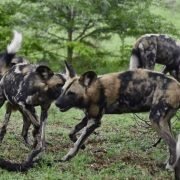
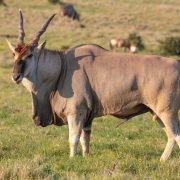
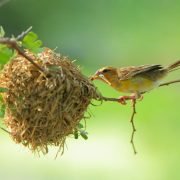
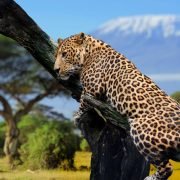
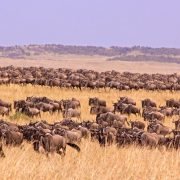
Birds:
A true paradise for bird enthusiasts, the Serengeti boasts over 500 recorded bird species. From the elegant grey crowned crane and the mighty martial eagle to colorful lilac-breasted rollers, the skies and plains are alive with avian diversity. Wetlands attract flamingos, storks, and pelicans, while raptors patrol the open savannah. Seasonal migrations bring even more variety, as European and Asian species join Africa’s residents. Birdwatching here is rewarding year-round, with unique sightings in every region—from forested riverbanks to grassy plains—making Serengeti a world-class destination for both wildlife and bird photography.
Serengeti Weather
Serengeti National Parks FAQ's
General Serengeti Information
1. Where is Serengeti National Park located?
Serengeti National Park is situated in northern Tanzania, spanning the Mara and Simiyu regions, and shares its northern border with Kenya’s Maasai Mara National Reserve. As part of the greater Serengeti ecosystem, it’s one of East Africa’s most iconic safari destinations, easily accessible from Arusha, Kilimanjaro International Airport, and other major tourism hubs.
2. How large is Serengeti National Park?
Covering approximately 14,750 square kilometers, Serengeti National Park is one of Africa’s largest and most celebrated wildlife areas. Its endless plains, woodlands, and river systems provide diverse habitats for thousands of animal species, making it ideal for big game safaris, birdwatching, and nature photography.
3. What is Serengeti National Park famous for?
The Serengeti is world-famous for the Great Wildebeest Migration, where over 1.5 million wildebeests, along with hundreds of thousands of zebras and gazelles, traverse the plains in search of fresh grazing. The park is also renowned for its rich predator populations — lions, cheetahs, leopards, and hyenas — offering some of the most dramatic wildlife encounters in Africa.
4. What wildlife can I expect to see in Serengeti?
Serengeti is home to an extraordinary variety of wildlife, including the Big Five — lions, leopards, elephants, buffaloes, and rhinos — as well as cheetahs, giraffes, hippos, and crocodiles. With over 350 mammal species and more than 500 bird species, the park is a paradise for wildlife enthusiasts and photographers alike.
5. Is Serengeti National Park safe for tourists?
Yes. Serengeti is considered very safe for visitors. Traveling with a licensed operator like Leen Adventures ensures professional guidance, adherence to park rules, and a safe experience. While wildlife is wild and should be respected, your guide ensures your safety by following established routes and protocols.
6. When is the best time to visit Serengeti?
Serengeti offers excellent experiences year-round. The dry season (June–October) is ideal for game viewing as animals gather near water sources, while the wet season (March–May) brings lush landscapes and migratory birds. The calving season, from January to March in the southern plains, is a remarkable time to witness newborn wildlife.
7. What types of safaris are available in Serengeti?
Visitors can enjoy morning and evening game drives, hot air balloon safaris, walking safaris in designated areas, photographic safaris, and cultural visits to Maasai villages. Each option provides a unique way to explore the park’s stunning landscapes and abundant wildlife.
8. How do I get to Serengeti National Park?
Serengeti is accessible by domestic flights to airstrips such as Seronera, Kogatende, or Grumeti from Arusha, Zanzibar, or Kilimanjaro. Overland journeys from Arusha take approximately 7–8 hours and can be combined with stops at Ngorongoro Crater or Lake Manyara for a comprehensive northern safari experience.
9. What should I pack for a Serengeti safari?
Pack lightweight, breathable clothing in neutral colors, a wide-brim hat, sunglasses, sunscreen, insect repellent, binoculars, a reusable water bottle, and a camera with extra batteries. A small personal medical kit is also recommended.
10. Are there luxury accommodations in Serengeti?
Yes. Serengeti offers a wide range of accommodations, from luxury lodges and permanent tented camps to mobile camps that move with the migration. Options such as Four Seasons Serengeti, Singita, Asilia, Lemala, and Serengeti Serena Safari Lodge provide comfort, exclusivity, and excellent access to wildlife.
The Great Wildebeest Migration
1. What is the Great Wildebeest Migration?
The Great Wildebeest Migration is one of the planet’s most remarkable wildlife spectacles. Each year, more than 1.5 million wildebeests—accompanied by zebras, gazelles, and other grazers—travel in a continuous circular movement across the Serengeti–Mara ecosystem in search of fresh grazing and water. Guided by rainfall and natural survival instincts, this phenomenon is a signature highlight of any Tanzania safari with Leen Adventures.
2. When does the migration happen in the Serengeti?
The migration is a year-round event, with different stages unfolding across various parts of the Serengeti. Key moments include the calving season from January to March in the southern plains, the Grumeti River crossings around June–July in the western corridor, and the dramatic Mara River crossings from August to October in the northern Serengeti.
3. Where are the best places to view the migration?
Each phase of the migration aligns with specific regions within the Serengeti:
Southern Plains (Ndutu) – January to March (Calving season)
Western Corridor (Grumeti) – April to July
Northern Serengeti (Kogatende & Lamai) – August to October (Mara River crossings)
Central Serengeti (Seronera) – November to December
Choosing the correct location ensures you see the migration at its most exciting and dramatic moments.
4. What makes the Mara River crossing so famous?
The Mara River crossing is considered the most iconic chapter of the Great Migration. During this stage, massive herds brave fast-moving water, steep banks, and lurking crocodiles. The result is a dramatic and unforgettable scene, cherished by wildlife photographers and safari lovers alike.
5. Do predators follow the migration?
Yes. Lions, cheetahs, leopards, hyenas, and crocodiles closely shadow the moving herds. This creates an ever-changing environment of predator-prey interactions, offering thrilling wildlife encounters unique to the Serengeti ecosystem.
6. Is it possible to follow the migration throughout the year?
Absolutely. Leen Adventures provides guided itineraries and access to seasonal camps that track the herds across different regions. With proper planning, you can witness various stages of the migration no matter when you travel.
7. Can I see the migration from a hot air balloon?
Yes. Hot air balloon safaris over the Central and Northern Serengeti offer breathtaking aerial views of the herds. Drifting over the vast plains at sunrise provides a magical and unforgettable perspective.
8. What kind of accommodations are available during the migration?
Travelers can choose from mobile migration camps, luxury lodges, and seasonal tented camps positioned strategically near key migration zones. Popular options include &Beyond Serengeti Under Canvas, Lemala Kuria Hills, and Nomad Lamai Serengeti, all offering comfort and exclusivity close to the action.
9. Is the migration suitable for family safaris?
Yes. The Great Migration is a safe and captivating experience for families. Many partner lodges and safari setups offer child-friendly programs, educational wildlife activities, and specially tailored family suites. Some activities such as ballooning or walking safaris may have age restrictions.
10. Why is the Great Migration important for conservation and tourism?
The Great Migration showcases the importance of ecological balance, habitat protection, and wildlife corridors. It supports community-based tourism, contributes to conservation efforts, and promotes sustainable travel across Tanzania. Through responsible tourism, Leen Adventures helps safeguard this natural wonder for future generations.
More Facts
- The Great Migration: One of the most spectacular wildlife events in the world, the Great Migration sees millions of wildebeests, zebras, and gazelles moving across the Serengeti and into Kenya’s Masai Mara in search of fresh grazing grounds. Along the way, they are accompanied by predators like lions, crocodiles, and hyenas.
- Diverse Wildlife: Serengeti is home to the "Big Five" (lion, leopard, elephant, buffalo, and rhinoceros), along with cheetahs, giraffes, hippos, crocodiles, and hundreds of bird species. Its ecosystems, from savannahs to riverine forests, host a wide array of creatures year-round.
- Endless Plains: Serengeti’s name means “endless plains” in the Maasai language, perfectly capturing its vast, sweeping landscapes that stretch as far as the eye can see. The park features rolling hills, rocky outcrops (kopjes), and the Seronera River that supports a rich mix of wildlife.
- Hot Air Balloon Safaris: For a truly unique perspective, visitors can take to the skies in a hot air balloon, offering panoramic views of the Serengeti at sunrise. The flight provides a bird’s-eye view of the wildlife and the expansive landscape below.
- Cultural Encounters: Travelers can experience Maasai culture through visits to Maasai villages, gaining insight into their traditions, lifestyle, and customs that have remained unchanged for centuries.